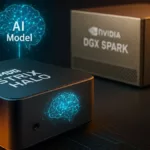Alright, let’s talk AI. The field’s buzzing like a server room full of caffeinated bees, and standing tall amidst it all is IBM with Granite. Now, IBM isn’t some fresh-faced startup that just discovered algorithms. It has been wrestling with AI concepts for decades. Seriously. Since before AI was the cool kid at the tech party, IBM was building “expert systems” back when the rest of us were mastering floppy disks. Granite is IBM’s latest heavyweight champ, built on being Open, Performant and Trusted. Think of it as the friendly giant of the AI world.
Why Open Source Is IBM’s Jam
IBM is really into open source, and frankly, it makes sense. Why keep your cool tech locked in a black box when you can share it (under licenses like the friendly Apache 2.0, not the scary kind)? Granite models often strut their stuff out in the open, meaning they’re usually free-ish to use and way easier to tinker with than those mysterious proprietary AIs.
This openness is IBM’s superpower. It’s a wizard at taking a solid open-source foundation (like Granite) and helping businesses sprinkle their own secret sauce (aka client data) on top. The result? Custom AI that actually works for specific needs, built faster than you can say “synergistic optimization.”
Need proof? One poor company was drowning in 300,000 customer calls, trying to get answers to 81 questions using some fancy proprietary AI that was… well, not helping. It was like using a fork to eat soup. IBM swooped in, Granite model in hand (figuratively speaking), and bam – success! Open source for the win.
From Texting to Talking: Granite’s Glow-Up
Granite didn’t just appear fully formed. It’s had quite the evolution. It started with text, like most AIs learning their ABCs. Then it got good with time-based stuff for forecasting (predicting the future, basically). Granite 3.2 learned to see, adding image support. And now, with 3.3, it’s got the gift of gab – full voice support! We’re talking speech recognition, translation and transcribing even those super long, rambling meeting notes. Its ability to handle context has also ballooned from 12K to a whopping 128K tokens – that’s like going from reading a pamphlet to understanding an epic novel.
Imagine this in insurance: Granite looks at your dented car pics, chats with you about what happened (“Did a rogue shopping cart attack?”), and gets the claim rolling, mostly on its own. Less paperwork for you, faster processing – it’s almost enough to make insurance feel… pleasant? Maybe? It’s also a whiz at pulling key info from dense technical manuals and answering questions about it, especially with some RAG (Retrieval-Augmented Generation) magic involved.
Lean, Mean, AI Machine
Don’t let the “open” part fool you into thinking Granite isn’t powerful. IBM claims it’s the speediest open-source model out there, giving even the big-name proprietary AIs a serious run for their money. On tasks like speech recognition, benchmarks show it matching or beating the competition.
And here’s the kicker: it’s efficient. Granite models can often do their magic on a single, affordable GPU – no need for a server farm cooled by arctic winds. This efficiency is huge for businesses wanting to actually use AI without breaking the bank. IBM’s own research suggests smaller Granite models can be more cost-effective for certain tasks than gigantic ones like GPT-4 (nerd out on the details here). Remember the US Open? When faced with a tsunami of tennis matches, IBM’s AI (powered by tech like Granite) managed to report on everything in real-time – a first! That’s handling scale.
Thinking Deep, Playing Safe
Granite is also getting smarter with enhanced reasoning, like “chain-of-thought” (basically, showing its work). This can create a lot of digital chatter (tokens), but Granite’s efficiency handles it gracefully. Importantly, IBM baked in safety and quality from day one. So, while some other models apparently lost their minds a bit when trying to get smarter (looking at you, DeepSeek comparison!), Granite kept its cool, focusing on reliable, trustworthy results. Less chance of your AI suddenly deciding the sky is plaid.
This “Trusted” label isn’t just marketing fluff. It’s backed by that clear Apache 2.0 license, transparent data practices, IP indemnification (lawyer-speak for “we got your back”), and strong digital guardrails to keep things secure.
Wrapping Up
So, IBM Granite? It’s Big Blue’s experienced, open and surprisingly efficient answer to the AI call. It’s already making waves within IBM itself and helping clients tackle real problems. By mixing performance with openness and a solid dose of trust (plus maybe saving you from rogue shopping carts), Granite is definitely an AI suite worth watching in the business world. It’s AI that’s ready to work, not just hog the headlines.








